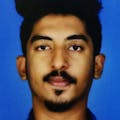from tensorflow.keras.applications.mobilenet_v2 import preprocess_input
from tensorflow.keras.preprocessing.image import img_to_array
from tensorflow.keras.models import load_model
from imutils.video import VideoStream
import numpy as np
import argparse
import imutils
import time
import cv2
import os
import pygame
from imutils.video import FPS
import pickle
import smtplib, ssl
import datetime
m = 0
found = 0
face_apparition_time = 0 # We haven't seen a face yet, so apparition time is 0
# Gives a time in seconds since a fixed point we don't control, we'll use it as a checkpoint
timer = time.time()
# port = 587 # For starttls
# smtp_server = "smtp.gmail.com"
# sender_email = "ville.cloud@gmail.com"
# receiver_email = "dilghas.ommer@gmail.com"
# password = "Asder@123"
# Initialize Pygame and load music
pygame.mixer.init()
pygame.mixer.music.load('audio/alert.wav')
def detect_and_predict_mask(frame, faceNet, maskNet):
(h, w) = frame.shape[:2]
blob = cv2.dnn.blobFromImage(frame, 1.0, (300, 300),
(104.0, 177.0, 123.0))
faceNet.setInput(blob)
detections = faceNet.forward()
faces = []
locs = []
preds = []
for i in range(0, detections.shape[2]):
confidence = detections[0, 0, i, 2]
if confidence > args["confidence"]:
box = detections[0, 0, i, 3:7] * np.array([w, h, w, h])
(startX, startY, endX, endY) = box.astype("int")
(startX, startY) = (max(0, startX), max(0, startY))
(endX, endY) = (min(w - 1, endX), min(h - 1, endY))
face = frame[startY:endY, startX:endX]
face = cv2.cvtColor(face, cv2.COLOR_BGR2RGB)
face = cv2.resize(face, (224, 224))
face = img_to_array(face)
face = preprocess_input(face)
faces.append(face)
locs.append((startX, startY, endX, endY))
if len(faces) > 0:
faces = np.array(faces, dtype="float32")
preds = maskNet.predict(faces, batch_size=32)
return (locs, preds)
ap = argparse.ArgumentParser()
ap.add_argument("-f", "--face", type=str,
default="face_detector",
help="path to face detector model directory")
ap.add_argument("-m", "--model", type=str,
default="mask_detector.model",
help="path to trained face mask detector model")
ap.add_argument("-c", "--confidence", type=float, default=0.5,
help="minimum probability to filter weak detections")
args = vars(ap.parse_args())
print("[INFO] loading face detector model...")
prototxtPath = os.path.sep.join([args["face"], "deploy.prototxt"])
weightsPath = os.path.sep.join([args["face"],
"res10_300x300_ssd_iter_140000.caffemodel"])
faceNet = cv2.dnn.readNet(prototxtPath, weightsPath)
print("[INFO] loading face mask detector model...")
maskNet = load_model(args["model"])
print("[INFO] starting video stream...")
vs = VideoStream(src=0).start()
time.sleep(2.0)
######################################################################################
# construct the argument parser and parse the arguments
ap = argparse.ArgumentParser()
ap.add_argument("-d", "--detector", default="face_detection_model",
help="path to OpenCV's deep learning face detector")
ap.add_argument("-m", "--embedding-model", default="openface_nn4.small2.v1.t7",
help="path to OpenCV's deep learning face embedding model")
ap.add_argument("-r", "--recognizer", default="output/recognizer.pickle",
help="path to model trained to recognize faces")
ap.add_argument("-l", "--le", default="output/le.pickle",
help="path to label encoder")
ap.add_argument("-c", "--confidence", type=float, default=0.5,
help="minimum probability to filter weak detections")
args = vars(ap.parse_args())
# load our serialized face detector from disk
print("[INFO] loading face detector...")
protoPath = os.path.sep.join([args["detector"], "deploy.prototxt"])
modelPath = os.path.sep.join([args["detector"],
"res10_300x300_ssd_iter_140000.caffemodel"])
detector = cv2.dnn.readNetFromCaffe(protoPath, modelPath)
# load our serialized face embedding model from disk
print("[INFO] loading face recognizer...")
embedder = cv2.dnn.readNetFromTorch(args["embedding_model"])
# load the actual face recognition model along with the label encoder
recognizer = pickle.loads(open(args["recognizer"], "rb").read())
le = pickle.loads(open(args["le"], "rb").read())
# start the FPS throughput estimator
fps = FPS().start()
#######################################################################################
while True:
frame = vs.read()
frame = imutils.resize(frame, width=800)
(h, w) = frame.shape[:2]
# construct a blob from the image
imageBlob = cv2.dnn.blobFromImage(
cv2.resize(frame, (300, 300)), 1.0, (300, 300),
(104.0, 177.0, 123.0), swapRB=False, crop=False)
# apply OpenCV's deep learning-based face detector to localize
# faces in the input image
detector.setInput(imageBlob)
detections = detector.forward()
# loop over the detections
for i in range(0, detections.shape[2]):
# extract the confidence (i.e., probability) associated with
# the prediction
confidence = detections[0, 0, i, 2]
# filter out weak detections
if confidence > args["confidence"]:
# compute the (x, y)-coordinates of the bounding box for
# the face
box = detections[0, 0, i, 3:7] * np.array([w, h, w, h])
(startX, startY, endX, endY) = box.astype("int")
# extract the face ROI
face = frame[startY:endY, startX:endX]
(fH, fW) = face.shape[:2]
# ensure the face width and height are sufficiently large
if fW < 20 or fH < 20:
continue
# construct a blob for the face ROI, then pass the blob
# through our face embedding model to obtain the 128-d
# quantification of the face
faceBlob = cv2.dnn.blobFromImage(face, 1.0 / 255,
(96, 96), (0, 0, 0), swapRB=True, crop=False)
embedder.setInput(faceBlob)
vec = embedder.forward()
# perform classification to recognize the face
preds = recognizer.predict_proba(vec)[0]
j = np.argmax(preds)
proba = preds[j]
name = le.classes_[j]
# draw the bounding box of the face along with the
# associated probability
# text = "{}: {:.2f}%".format(name, proba * 100)
# y = startY - 10 if startY - 10 > 10 else startY + 10
# cv2.rectangle(frame, (startX, startY), (endX, endY),
# (0, 0, 255), 2)
# cv2.putText(frame, text, (startX, y),
# cv2.FONT_HERSHEY_SIMPLEX, 0.45, (0, 0, 255), 2)
# update the FPS counter
fps.update()
(locs, preds) = detect_and_predict_mask(frame, faceNet, maskNet)
for (box, pred) in zip(locs, preds):
(startX, startY, endX, endY) = box
(mask, withoutMask) = pred
label = "Mask" if mask > withoutMask else "No Mask"
color = (0, 255, 0) if label == "Mask" else (0, 0, 255)
if label == "No Mask":
pygame.mixer.music.play()
# time.sleep(0.1)
face_apparition_time = time.time() - timer
print(face_apparition_time)
else:
pygame.mixer.music.stop()
timer = time.time()
face_apparition_time = 0
m = 0
label = " {}: {:.2f}% {}: {:.2f}%".format(name, proba * 100, label, max(mask, withoutMask) * 100)
face_apparition_time = 0
cv2.putText(frame, label, (startX, startY - 10),
cv2.FONT_HERSHEY_SIMPLEX, 0.45, color, 2)
cv2.rectangle(frame, (startX, startY), (endX, endY), color, 2)
cv2.imshow("Frame", frame)
key = cv2.waitKey(1) & 0xFF
if key == ord("q"):
break
fps.stop()
print("[INFO] elasped time: {:.2f}".format(fps.elapsed()))
print("[INFO] approx. FPS: {:.2f}".format(fps.fps()))
server.quit()
cv2.destroyAllWindows()
vs.stop()






Comments